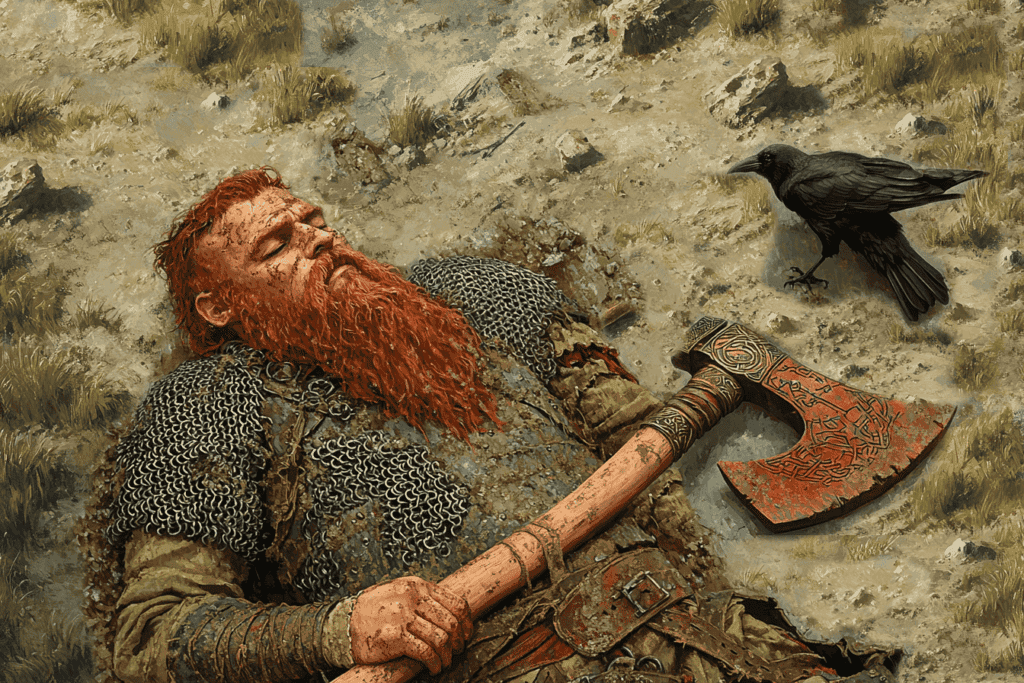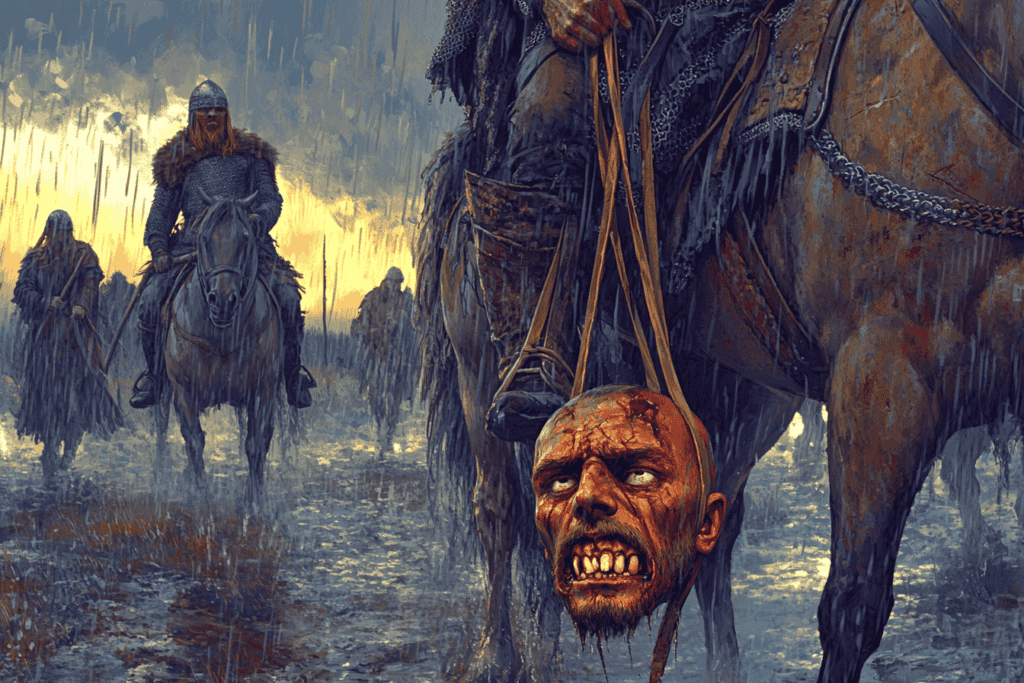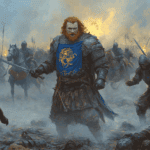
Sigurd Eysteinsson, known as Sigurd the Mighty, was a formidable Viking leader whose exploits left an indelible mark on the history of Scotland and the Norse world during the late 9th century. As the second Earl of Orkney, Sigurd’s reign (c. 875–892 AD) was characterized by conquest, treachery, and a death as ironic as it was gruesome.
The Rise of Sigurd: From Orkney to Mainland Scotland
Sigurd was born into the powerful House of Eysteinsson, a prominent Norwegian noble family. His father, Eystein “Glumra” (the Noisy), was a key figure in Norse aristocracy. Sigurd’s exact birth date remains unclear, but his formative years coincided with a period of significant upheaval in Scandinavia. King Harald Fairhair of Norway had embarked on a campaign to unify Norway under his rule, leading many Viking chieftains to seek new opportunities abroad. This migration fueled Norse expansion into regions like Scotland, Ireland, and the North Atlantic islands.
The establishment of the Earldom of Orkney was part of King Harald’s efforts to consolidate power over rebellious Vikings who had used the islands as bases for raids on Norway. After defeating these pirates, Harald granted Orkney and Shetland to Rognvald Eysteinsson as compensation for the death of his son Ivar during the campaign. Rognvald later passed the title to his brother Sigurd, who became one of Harald’s trusted lieutenants
Under Sigurd’s leadership, Orkney became more than just a strategic base for Viking raids; it was transformed into a power center for Norse influence in Scotland. Recognizing the potential for expansion, Sigurd forged alliances and launched military campaigns that extended his control into northern Scotland. One of his most significant partnerships was with Thorstein the Red, son of Olaf the White (King of Dublin) and Aud the Deep-Minded. Together, they embarked on a campaign that brought much of northern Scotland under their control, including regions like Caithness, Sutherland, Moray, and Ross.

The Alliance with Thorstein the Red
Sigurd’s alliance with Thorstein was not merely one of convenience; it was emblematic of his ability to navigate complex political landscapes. Thorstein’s lineage connected him to both Norse and Irish royalty, making him a valuable ally. Their combined forces were formidable enough to conquer vast territories in northern Scotland. Moray, in particular, became a strategic base for their operations. Its fertile lands and access to critical routes like the Great Glen allowed Sigurd to secure passage between eastern and western Scotland while facilitating raids further south.
However, this partnership came to an abrupt end when Thorstein was killed in battle. Despite this loss, Sigurd continued his campaigns independently, consolidating his hold over the territories they had conquered together.

Conflict with Máel Brigte: A Tale of Treachery
One of Sigurd’s most infamous exploits involved his conflict with Máel Brigte Tusk, a Pictish leader known for his distinctive protruding tooth. The two leaders agreed to meet for negotiations with an equal number of men—40 on each side. However, Sigurd betrayed this agreement by bringing 80 men and disguising them by having two warriors ride on each horse with the second rider keeping low behind his companion. Máel Brigte quickly realized the deception but chose to face Sigurd’s forces rather than retreat. The ensuing battle was brutal. Sigurd’s men overwhelmed Máel Brigte’s smaller force through superior numbers and tactical maneuvering.
After their victory, Sigurd ordered his men to decapitate their fallen enemies and tie their heads to their saddles as trophies. However, this act of triumph turned into poetic justice when Máel Brigte’s severed head grazed Sigurd’s leg with its tooth as he rode back to Orkney. The wound became infected, leading to Sigurd’s death—a fittingly ironic end for a leader whose cunning often bordered on treachery.

Legacy and Succession
Sigurd’s death plunged Orkney into chaos. His son Guttorm briefly succeeded him but died childless within months. The earldom passed to Rognvald’s son Hallad, who proved incapable of managing Viking raids in the region and resigned in disgrace. Eventually, Rognvald appointed his youngest son Einarr—a figure whose mother was reportedly a slave—as Earl of Orkney.
Despite this instability, Sigurd’s reign marked a turning point in Norse influence over northern Scotland, beginning a new era of integration between Norse and local cultures. His descendants continued to rule Orkney and parts of northern Scotland, blending Norse traditions with those of the Picts and Scots. The Orkneyinga Saga immortalizes Sigurd’s exploits, painting him as both a ruthless conqueror and a shrewd strategist whose actions shaped the region’s history.




